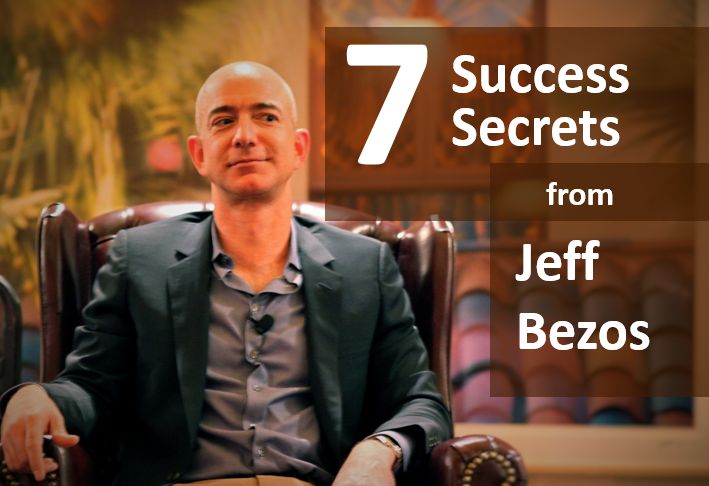What makes a company like Amazon successful? What principles enabled Jeff Bezos, founder and CEO of Amazon, to develop a vision from a garage business to the world’s largest retailer? Are Kindle, Amazon Web Services and other innovations proof that he is the next Steve Jobs?
I found many of these answers in the book The Everything Store: Jeff Bezos and the Age of Amazon by Brad Stone

Before reading this book I had a mental image of Jeff Bezos that resembled Oracle’s Larry Ellison: a high energy, super smart, egotistical leader that wanted to win at all costs. This fascinating book helped me realize how much I was missing. Although accurate, the description above is incomplete, and fails to accentuate the utter genius behind Jeff Bezos, and the remarkable story of how he built Amazon.
It would be easy to attribute the success of Amazon to luck and to being at the right place at the right time. That, however, would be a mistake. It is clear that even if luck and timing were a factor, which they always are, success came as a result of a vision and a set of principles that have steered Amazon to dominate online retail and e-book publishing today.
Building an Empire
It’s 2001. Amazon has just laid off over a thousand employees. The company has never been profitable. Two years ago, Barron’s published an article labeled Amazon.Bomb. The press claims new age companies need to play by old-age economic rules. Few people have faith that the Amazon model will work at all. Just a few years later, we know it does. Today, Amazon is worth $165 billion dollars.
In the last fiscal year, the company reported $74 Billion in revenue. For reference, total US eCommerce sales in 2013 were $258 Billion. Amazon remains the largest online retailer by an order of magnitude. The second, third, and fourth places belong to Staples, Apple, and Walmart, all three of which accumulated online revenues around $10 Billion in 2013. According to Internet Retailer , Amazon’s sales grew over 27% in 2012 when the market grew at 15.8%. Amazon’s sales represent about a third of the total sales generated by all 500 of the top retailers.
Bezos has built a conglomerate that spans far wider than just Amazon.com, pursuing other ventures such as 6pm, soap.com, IMDB, Alexa, Digital Photography Review, Alexa, CreateSpace, Diapers.com, Vine, and a dozen other properties. Some of these, like Zappos for example, an online retailer specialized on shoes and customer service, are left to operate independently, under a different business model and culture. Maybe Bezos wants to keep these companies pure, or maybe he treats them as experiments with the goal of learning about their model and minimizing competition.
The growth Amazon has experienced has upset many competitors. Jeff Bezos’ philosophy revolves around winning and innovating. Innovation often leaves companies behind. Bezos’ illustrated this point when he stated that “Amazon isn’t happening to the book business. The future is happening to the book business“. Jeff is simply embracing and accelerating the future.
As I read the book, it became clear that there existed a set of values or principles that guided Bezos’ business strategy and tactical execution. I had just read Titan, the biography of John D. Rockefeller, and found that Bezos and Rockefeller resembled each other through their intellectual curiosity, long term thinking, and relentlessness towards a bold vision – among other traits.
So what is the secret formula?
The good news is that it is not secret anymore. The bad news is that it is not easy to execute, and it may not work for all businesses. It may only work for leaders who share Bezos‘s personality. The biggest challenge may stem from remaining consistent. Far too many companies change direction frequently, altering their strategy every few months in search of the most successful approach.
Jeff’s 1997 letter to shareholders highlighted the three key points behind Amazon’s strategy: obsession over customers, innovation, and long-term thinking. These three principles are the same ones that guide the company today, and can be summed up in the following statement from Jeff Bezos quoted in the book:
“What makes us different is this: We are genuinely customer centric, we are genuinely long term oriented and we genuinely want to invent. Most companies are not those things: they are focused on the competitor rather than the customer. They want to work on things that pay dividends on two or three years, and if they don’t they move on to something else. They prefer to be close followers rather than inventors because it is safer.”
The 7 Principles Behind Amazon’s Success
1. Customer Obsession. Amazon is the ultimate customer centric company. Not in the way of Nordstrom or Ritz Carlton, where this means customer service and catering to individual customer needs. Amazon started with customer experience and worked backwards. Bezos often read customer feedback and acted on it, not only to make one customer happy, but to fix the system. A customer complaint is evidence of a fault in the system.
Bezos’ actions proved his customer obsession is more important than profits. He focused on reducing customer friction and improving customer experience. He had a vision of what customers expected, just like Steve Jobs did. In his Amazon.Love memo, Jeff expressed his desire to push Amazon to become one of the companies that is loved by its customers and join a list that includes Apple, Nike, Disney and Whole Foods.
When Bezos launched Prime at $79, he understood every shipment had a cost of $8, meaning they lost money with customers that placed more than 10 orders per year. However, Bezos stood by his decision based on his instincts and experience. Prime reduced friction and increased propensity to buy. It was a good decision for customers and for the company in the long term. For Bezos, this price point would force Amazon to find new ways to reduce shipping costs. This is a great example of how customer experience is driving company processes and priorities.
2. Think big. Be bold. Many companies could claim to be innovative, yet few really are. Jeff Bezos is able to visualize a better future, challenge the status quo, and make big bets. Even if not all of his ventures to innovate were successful. A couple of examples of radical transformations include the Kindle, Amazon Web Services, Amazon Prime, and Amazon Fresh among many more. His mantra was to Invent and Simplify.
Bezos understood the challenge of the innovator’s dilemma and understood the future was inevitable. He created the future instead of protecting his own business, becoming his own fiercest competitor. Bezos put the leader of the book business in charge of the Kindle business, giving him the goal to destroy his former business and get his former colleagues out of a job. Innovators find opportunity where others see challenges.
Thinking big meant Bezos defied the established rules and created his own game. For example, when he decided eBooks on Kindle should be $9.95, Bezos held to this price even though it meant the company could potentially lose money on every book sold. He established a new price point for the industry, which forced other publishers follow. $9.95 became the standard price point for eBooks.
3. Intellectual Curiosity. This is not the same as being innovative. Jeff was always asking questions, always reading books, always learning. Jeff and Amazon recognize some of the most valuable ideas may come from outside. This is very different than cultures with a not invented here syndrome. The page on leadership principles on Amazon.com states “Leaders are sincerely open-minded, genuinely listen, and are willing to examine their strongest convictions with humility.” This shows he is not egotistical, but that he encourages people to seek the truth even if it proves him wrong.
4. Long Term Thinking and Resiliency. Bezos does not manage to meet quarterly objectives. He is content with losing money in the short term. He became accustomed to ‘experts’ and analysts predicting failure for his company. Jeff understands changing the world requires a long term vision and that those changes require years, not a quarter or two. Making big bets that pay off in many years requires vision but also confidence, optimism, and resiliency. As another leadership principle sates: “As we do new things, we accept that we may be misunderstood for long periods of time”
5. Bias for Action. Speed matters. Bezos liked taking calculated risks rather than over-analyzing problems. When a decision needed to be made, he called it, even when consequences were uncertain or risky. Leaders are expected to get their hands dirty and pay attention to details. “Audit frequently” would say Bezos. Leaders are expected, even obligated, to challenge decisions. But once they are heard and a decision is determined, they must commit fully.
6. Manage for Results. Drive. Bezos created many interesting management practices: ‘two pizza teams’ limited the number of team members beyond which they lost effectiveness. Single page briefs replaced PowerPoints to communicate ideas and new projects. ‘Start with the press release’ forced teams to visualize the result, how a product or website feature would impact customers and the market, then work backwards.
Amazon looks for self-critical leaders who take accountability for the problems instead of hiding them. Another Amazon leadership principle on the amazon.jobs site states “Leaders have conviction and do not compromise execution for the sake of social cohesion“. Amazon also pursued frugality, which he probably learned from Wal-Mart. Retail businesses have razor thin margins that don’t leave much room for lavish offices or employee perks.
7. Insist on the Highest Standards. Bezos tried to hire and develop the best. He believed in continuous optimization and looked to fix problems at the source. Amazon employees are expected to work long, hard, and smart. Bezos was very demanding and did not expect his employees to balance their work with their personal lives. According to Bezos, “leaders are Right. A lot“. He expected individuals running parts of the business to have a detailed understanding of the business and to make sound decisions.
These 7 principles have guided Amazon from the idea stage to where the company is today. They are likely to guide Amazon for many years, or at least while Jeff stays at the helm. I will be watching where he takes Amazon next.
Photo courtesy Steve Jurveston via Flickr – creative commons

